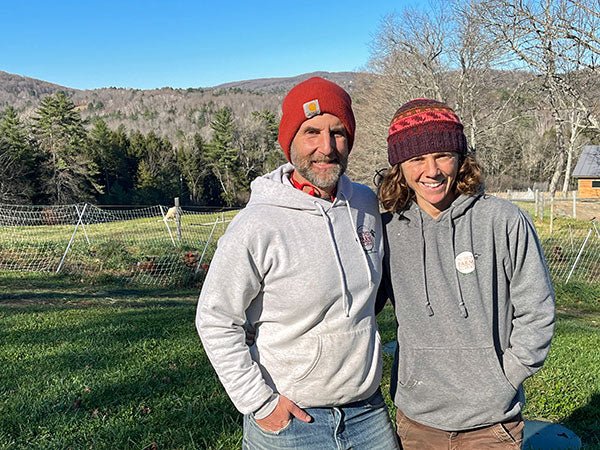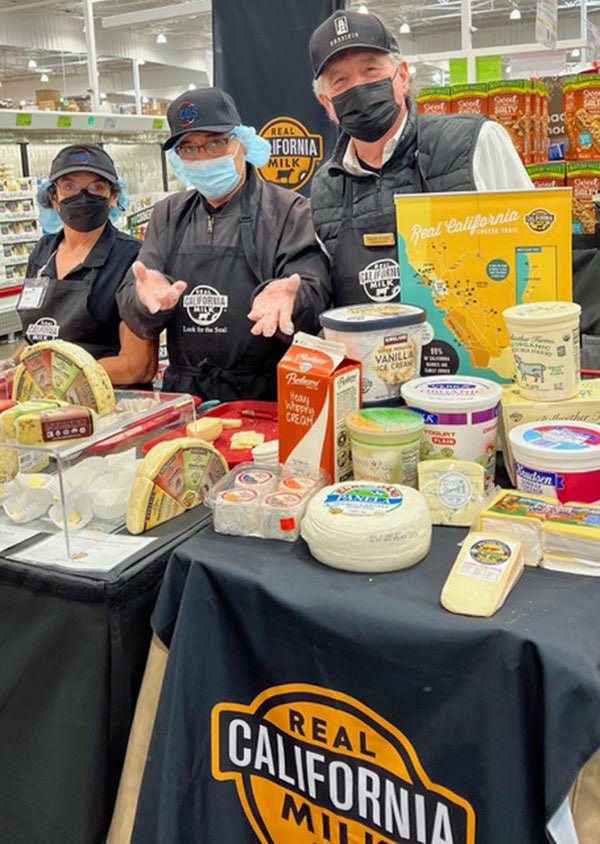Kylie is just starting her cheesemaking adventure, thanks to the gift of a workshop she attended last summer. Her story reminds us that workshops make the best gifts for aspiring cheesemakers. (As a bonus, after the workshop, the giver becomes the happy recipient of homemade cheese!)
Kylie’s Story
I live with my family in Melbourne, Victoria, Australia – my husband Andrew, our 2 teenagers, Felicity (18) and Fergus (14), as well as our Schipperke, Rémy (my fellow cheese fiend) and our Burmese cat, Charlotte.

Here we all are in far North Queensland in the Daintree Rainforest on a stand-up paddle board afternoon (faces with “natural mud packs”). March this year.
I love cheese and simply can’t live without it, especially since I’ve learnt to make my own.
I love the process. I think it’s a home and a channel for my inner “creative.” Or, maybe it’s just a love to discover something new and delicious (that I can eat!).
A new recipe comes with sweet anticipation. I love not knowing what to expect – it’s a bit unknown yet but the recipe promises something delicious to share with the people I love (Rémy included).
Yet, I’m honestly not far out of baby steps. For someone who’s loved cheese since she could crawl, and who’s only ever bought the stuff, to now be able to make it in my very own kitchen, experiment with it, unwrap it and enjoy it with my people, is a true thrill.
As a child, we lived on several acres on the King Parrot Creek.
Anyone who knows about blackberry bushes probably has some idea about how rampant they are, and while they’re alive, nothing else has a chance in the soil.
So, that’s where our goat Tessa (pictured here) came in. Goats will eat almost whatever they can, including socks and shirts on the clothesline. They can also tolerate prickle bushes, and from memory, Tessa devoured her way through vast clumps of blackberry bushes.
How I got started:
I’d never considered making my own cheese until Andrew gave me a beginners cheesemaking course for Christmas a couple of years ago.
Covid hit and it got postponed over endless Melbourne lockdowns (Melbourne was the “global capital” for lockdowns).
Anyway. The course finally went ahead this June. A 2-day immersion, truly comprehensive with no detail left out. It was run by Graham Redhead, who travels to Australian cities to teach his craft. (Cheesemaking – Cheesemaking Courses).
We learnt about essential hygiene practices, temperature control, how to cut, stir and hoop a range of cheeses – all of which we got to take home to enjoy.
Brie was my favorite and I have since made it many times. We also made – Greek feta, soft creamy feta, mozzarella and cheddar. The mozzarella was a tricky one, I think, because of the winter weather which may not have helped with our yield. But, the feta was so easy by contrast – very forgiving and simply delicious.
The standout cheese for me was the technically demanding Brie which I ended up ageing at home for 3 whole months and, goodness, it was worth every moment.
So, it was this introductory course which fueled my passion and appetite to plough on, consolidating my skills and finding my feet. Since then and many yields later, my confidence has bloomed and cheesemaking now stands as my favourite hobby, worth all the toil.
Most recently:
I enjoyed Cheesemaking 2 in early October. This course runs for people with some cheesemaking experience. It was another 2 day immersion, this time learning how to produce the wonderfully complex hard cheeses like blue and Parmesan.
Like the first, this was another 2-day immersive blast of fun. We made blue vein, Comte, halloumi, a washed rind cheese and a whey ricotta (which went into my latest feta and spinach cannelloni, shown below).
We also made cultured butter, something that’s sure to be made again and again in our butter obsessed home.
Many of the cheeses I made at the class will mature over the days – some, weeks ahead in my trusty cheese cave – aka the Australian ESKY (ice box). Just add frozen ice bricks and change daily.

My first blue at 5 weeks. The texture is soft and smooth as opposed to a harder, crumblier version. We learnt that to make a softer cheese, we keep our ‘cuts’ at the curd stage quite large. To achieve a crumblier version we would cut the curd into smaller cubes. On taste, I’d describe this blue as ‘smooth and pungent’ with a distinct earthy after taste. A good first blue. Goes well with a Pinot Noir.
My ongoing hobby:
My best local spot for milk is a delicatessen-type supermarket called Leo’s where you’ll find endless quality products from foie gras to chutney to chocolate from anywhere in the world. Their product range is exquisite. Milk direct from a dairy would be ideal, and my next thing to try.
I’m slowly building my range and repertoire of equipment and ingredients. Recently, I received my large pyramid mould from England and I can’t wait to make the tantalizing Monte Rosso which was featured on your site (cheesemaking.com) a little while back.
I love making the cheeses I’d only ever purchased from the supermarket. Basic ricotta, for instance, is the one that goes into our favourite family dish – spinach and ricotta cannelloni. It’s so satisfying knowing that the only store-bought ingredient in this delicious dish is the cannelloni tubes!
I frequently make a range of soft cheeses including Persian feta and Brie. And, as an addict of the rich, deep, earthy goat cheese flavours, (and perhaps stemming from a childhood love of goats), experimenting with this delicate milk is pure pleasure for me.
I’ve been experimenting with adding tapenades and truffles to goat Brie, adding these midway through cave ageing, and watching that fluffy “geo”mould re-envelop that scrumptious goodness over the remaining days.
I enjoy making Chabichou/Persian feta – so easy, and delicious, when beautifully packaged up in glass jars as gifts with different colours of herb and spice combinations.

Here’s a Persian feta marinated in olive and canola oils with peppercorns, rosemary and chilies. Wonderful on a peppered water cracker, or given to someone special as a gift.
Over a recent cheese board, we cracked open the first farmhouse cheddar I’d made at the course in June. It had aged for only 3 months, but it’s smooth and creamy texture and round, delicate flavour was a delicious surprise.
Other hobbies:
Silver:
When I’m not making cheese, I enjoy silversmithing. I’m relatively new to it but at 51 – I reckon it’s better late than never to take time for those tactile interests I’ve held forever, and dive into what’s truly mindful and creative for me. 😁
Some years ago I learnt how to craft a silver ring from a length of silver wire – working it through a process of heating (annealing), bending, soldering, refining and polishing to create a beautiful brilliance that only silver can produce.
This year I’ve returned to this mindful, immersive craft and right now I’m learning the art of wax carving.
The large file will help with first carvings before smaller ones and other implements help to refine the design.
The ring will be formed using wax casting; the process of carving the design first in wax (here, dark green) which is then cast into a plaster mould, baked at over 650C to achieve the firmest mould that will then take molten silver to produce the final form.
This design is quite an optical illusion, and my first cast was a fail. I’m now on my second chunk of wax and determined to get there!

It’s still a work in progress with more polishing and refining to go, but so far, I’m thrilled with how it’s coming together.
Below is a Russian wedding ring I made earlier this year. Unfortunately, my soldering practice at the time left the piece a little too small for the finger! So, I love wearing it on my favourite silver box chain:
My Schipperke:
The Schipperke breed originates in Belgium. These feisty, energetic, intelligent little dogs were used to guard barges on canals in Belgium back in the 1700 and 1800s. Schipperkes were also used by the shoemakers to take care of rats and mice in their workshops.


























































































































































